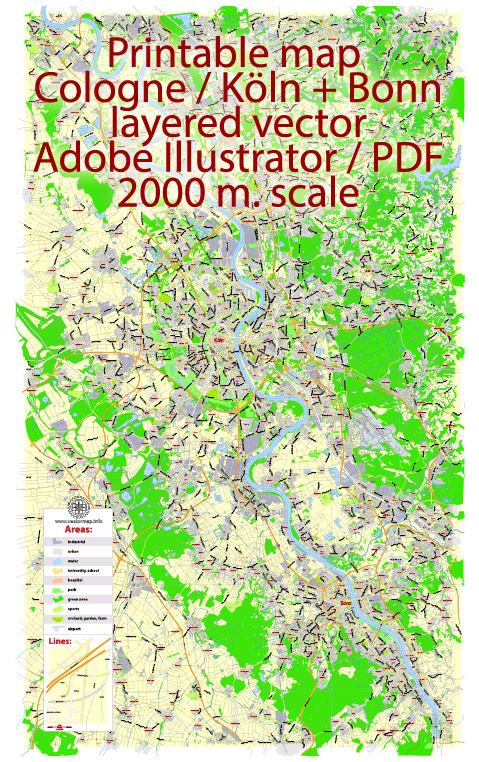Cologne and Bonn are two historic cities in Germany, both with rich histories and distinct urban development stories.
Cologne:
Ancient Roots:
- Cologne, or Köln in German, has ancient roots dating back to Roman times. Known as Colonia Claudia Ara Agrippinensium, it was established in 50 AD by the Romans.
- The city prospered as a major Roman trade and production center, and remnants of Roman structures, such as the city walls and the Roman Tower, can still be seen today.
Medieval Period:
- During the medieval period, Cologne became an important ecclesiastical center with the construction of the Cologne Cathedral (Kölner Dom). Construction began in 1248, and the cathedral stands as a symbol of Gothic architecture and a UNESCO World Heritage Site.
Hanseatic League:
- In the late Middle Ages, Cologne became a member of the Hanseatic League, a commercial and defensive confederation of merchant guilds and market towns. This further boosted the city’s economic and political influence.
Modern Times:
- Cologne suffered significant damage during World War II, with the city center being heavily bombed. However, efforts were made to rebuild, and some historic structures were restored.
Contemporary Urban Development:
- Today, Cologne is a vibrant cultural hub with a mix of historic and modern architecture. The Rhine River plays a crucial role in the city’s layout, and the Hohenzollern Bridge is a prominent landmark connecting the two riverbanks.
Bonn:
Roman Influence:
- Bonn also has Roman roots, and it was originally founded as a Roman military settlement. Over time, it developed into a regional center for trade and administration.
Beethoven’s Birthplace:
- One of Bonn’s most famous residents is Ludwig van Beethoven, the renowned composer. Beethoven was born in Bonn in 1770, and his birthplace is now a museum dedicated to his life and work.
Capital of West Germany:
- After World War II, Bonn became the provisional capital of West Germany (Bundesrepublik Deutschland) in 1949. This status continued until German reunification in 1990.
Post-Reunification Era:
- With the reunification, Berlin regained its status as the capital, but Bonn didn’t lose its significance. It became a center for international cooperation and hosts numerous UN institutions and conferences.
Urban Planning:
- Bonn has a well-planned urban layout with a mix of historical buildings and modern structures. The Rhine River also plays a significant role in shaping the city’s landscape.
Both Cologne and Bonn have embraced their historical legacies while adapting to the demands of modern urban life. Today, they are thriving cities that offer a blend of cultural richness, economic activity, and a high quality of life.


 Author: Kirill Shrayber, Ph.D.
Author: Kirill Shrayber, Ph.D.